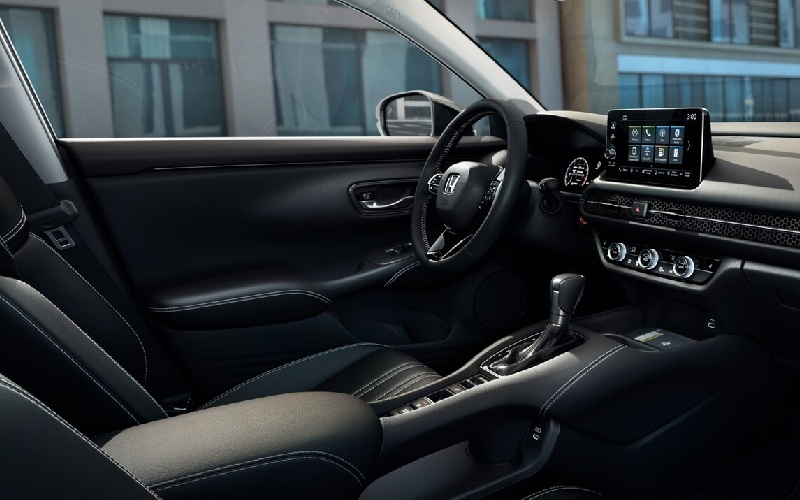The Honda CR-V has earned its reputation as one of the most reliable compact SUVs on the market, with many examples exceeding 300,000 kilometers when properly maintained. Regular oil changes stand as perhaps the most critical maintenance item for ensuring the longevity of the CR-V. While it might be tempting to extend intervals between oil changes or skip them altogether, the consequences can be severe and far-reaching.

The Essential Role of Engine Oil
Engine oil, also called lubricant, serves multiple crucial functions in your Honda CR-V, none of which can be compromised without consequences.
Lubrication and Friction Reduction
The primary purpose of engine oil is to create a protective film between moving metal components that would otherwise directly contact each other. Your CR-V engine contains numerous metal-on-metal contact points, including:
- Pistons moving within cylinders
- Crankshaft and connecting rod bearings
- Camshaft lobes against valve lifters
- Timing chain components
Without proper lubrication, these metal surfaces create friction that generates excessive heat and causes rapid wear. Honda engineers designed the CR-V engine with specific tolerances that depend on clean, high-quality oil to maintain the proper clearance between components.
Heat Dissipation
Engine lubricant circulates throughout your CR-V engine, carrying heat away from critical components. This cooling function is especially important in areas that cooling systems cannot directly reach. Up to 40% of engine cooling occurs through lubricant circulation in modern engines like those in the CR-V.
Contaminant Removal
As your CR-V operates, the combustion process creates contaminants, including carbon deposits, metal particles from normal wear, dirt, and moisture. Oil captures these contaminants and carries them to the filter, preventing them from circulating and causing damage.
Engine Sealing
Oil helps seal the gap between piston rings and cylinder walls, maintaining proper compression. This sealing function is essential for power output, fuel efficiency, and emissions control in your CR-V.
Immediate Consequences of Delayed Oil Changes
When intervals are extended beyond Honda recommendations, several negative effects begin almost immediately.
Oil Degradation
Modern synthetic lubricants used in Honda CR-V models resist breakdown better than conventional options, but they still degrade over time through:
- Oxidation from exposure to oxygen at high temperatures
- Shearing forces that break down molecules
- Contamination from combustion byproducts
- Moisture accumulation during short trips
This degradation reduces the viscosity and lubricating properties, diminishing its ability to protect your engine.
Filter Saturation
The oil filter in your CR-V can only hold a finite amount of contaminants. Once saturated, one of two things happens:
- The bypass valve opens, allowing unfiltered lubricant to circulate
- Oil flow becomes restricted, causing starvation in critical areas
Either scenario creates conditions that accelerate engine wear.
Sludge Formation
Perhaps the most visible consequence of neglected oil changes is sludge formation. This thick, gel-like substance develops when lubricant oxidizes and combines with contaminants. In the CR-V engine, sludge:
- Clogs passages and screens
- Coats internal components
- Impedes flow to critical areas
- Interferes with heat dissipation
Sludge is particularly problematic in the 2.4L Earth Dreams engine found in 2012-2016 CR-V models, where oil passages are designed for optimal efficiency rather than maximum flow volume.
Long-Term Damage from Neglected Oil Changes
Extended periods without oil changes lead to serious engine damage that is expensive or impossible to repair.
Accelerated Engine Wear
The most common long-term consequence is accelerated wear on engine components. When comparing engines with regular oil changes to those with neglected maintenance, the difference can be dramatic:
- Camshaft lobes show significant scoring and material loss
- Piston rings lose tension and develop deposits
- Bearings develop scoring that reduces lubricant film thickness
- Valve train components experience pitting and premature failure
In the CR-V 1.5L turbocharged engine (2017+), proper maintenance is even more critical due to the additional heat and stress created by the turbocharger.
Timing Chain Stretch and Failure
Honda CR-V models use timing chains rather than belts, which should theoretically last the life of the engine. However, neglected oil changes can cause:
- Chain stretch due to wear on links and pins
- Tensioner failure from sludge-blocked passages
- Guide and sprocket wear from inadequate lubrication
A timing chain failure can result in catastrophic engine damage, particularly in interference engines where valves and pistons occupy the same space at different points in the cycle.
Variable Valve Timing System Failure
The Honda i-VTEC system in the CR-V relies on oil pressure to control valve timing. When lubricant degrades or becomes contaminated:
- VTC actuators can stick or fail
- VTEC solenoids become clogged
- Oil control valves malfunction
These issues lead to check engine lights, reduced performance, poor fuel economy, and eventually component failure.
Total Engine Seizure
In extreme cases of neglect, your CR-V engine can seize completely. This occurs when:
- Oil breaks down to the point it no longer lubricates effectively
- Passages become completely blocked with sludge
- Oil burns off and is not replaced, leading to low oil level
- Bearings fail, causing the crankshaft to seize in the block
A seized engine typically requires complete replacement, as repair costs exceed the value of most used engines.
Impact on the Honda Maintenance Minder System
The CR-V Maintenance Minder system precisely calculates when oil changes are needed based on your specific driving conditions.
How the System Works
Unlike older vehicles with fixed mileage intervals, your CR-V monitors:
- Engine operating conditions
- Temperature variations
- RPM levels and duration
- Number of cold starts
- Actual driving distance
The system then calculates lubricant life percentage and alerts you when service is due.
Consequences of Ignoring Maintenance Minder
When you ignore the Maintenance Minder oil change indicators:
- The system continues counting down past 0% lubricant life
- Service history tracking becomes inaccurate
- Future maintenance timing may be affected
- The system cannot prevent damage from occurring
The Maintenance Minder is designed as an early warning system, not an absolute limit. Driving significantly beyond its recommendations substantially increases risk to your engine.
Effect on Vehicle Warranty
Neglecting oil changes can have serious implications for your CR-V warranty coverage.
Warranty Voiding
Honda warranty terms specifically state that damage resulting from improper maintenance isn’t covered. When investigating a warranty claim, Honda can:
- Request maintenance records
- Examine lubricant condition and level
- Inspect for signs of neglect
If evidence suggests oil changes were neglected, warranty claims for engine-related issues will likely be denied.
Implications for Extended Warranty Coverage
Even extended warranty providers typically exclude coverage for issues resulting from maintenance neglect. The financial protection you thought you had may not apply if oil change records don’t meet requirements.
Signs Your CR-V Needs an Oil Change
Beyond the Maintenance Minder system, several warning signs indicate your CR-V urgently needs an oil change:
Dashboard Warning Lights
- Oil pressure light (red oil can symbol) indicates critically low pressure
- Check engine light may illuminate due to issues caused by degraded lubricant
- VTEC system warnings often relate to oil pressure or quality issues
Unusual Engine Noises
- Ticking or tapping noises, especially when starting
- Knocking sounds during acceleration
- Increased overall engine noise level
Performance Changes
- Reduced power and acceleration
- Decreased fuel economy (often 10-15% lower than normal)
- Rough idling or stalling
Visual Indicators
- Dark, dirty oil on the dipstick
- Low oil level
- Visible sludge around the fill cap
These symptoms indicate service is already overdue, and damage may be occurring.
Recommended Oil Change Intervals
While the Maintenance Minder provides customized recommendations, general guidelines exist for Honda CR-V models:
2017-2025 CR-V Models
- Turbocharged 1.5L engine: Every 7,500-10,000 kilometers under normal conditions
- Service more frequently if regularly driving in severe conditions
- Full synthetic oil (0W-20) required
2012-2016 CR-V Models
- 2.4L engine: Every 8,000-12,000 kilometers under normal conditions
- Severe conditions may require 5,000-kilometer intervals
- Synthetic blend or full synthetic oil (0W-20) recommended
Older CR-V Models (Pre-2012)
- Every 5,000-8,000 kilometers recommended, despite longer factory intervals
- Conventional oil acceptable, but synthetic provides better protection
“Severe” driving conditions include frequent short trips, extreme temperatures, towing, and stop-and-go traffic—common scenarios for many CR-V owners.
The Financial Impact of Skipped Oil Changes
Beyond mechanical consequences, neglecting oil changes affects your CR-V economics.
Reduced Vehicle Lifespan
A properly maintained Honda CR-V engine typically lasts 300,000-400,000 kilometers. With neglected oil changes, this can drop to 150,000 kilometers or less—effectively cutting your vehicle’s useful life in half.
Increased Repair Costs
The progressive nature of oil-related damage means repair costs escalate rapidly:
- Early intervention: Basic oil change service
- Moderate neglect: Valve cover removal and sludge cleaning
- Significant neglect: Timing chain replacement, pump repair
- Severe neglect: Complete engine replacement or vehicle replacement
The cost difference between regular maintenance and major repairs can be substantial.
Diminished Resale Value
Vehicle history reports and pre-purchase inspections often reveal maintenance neglect. A CR-V with spotty oil change history typically sells for significantly less than a properly maintained example, sometimes 15-20% below market value.
Honda CR-V: The Value of Regular Oil Changes
Regular oil changes represent the most cost-effective insurance policy for your Honda CR-V. Following the Honda Maintenance Minder system recommendations ensures your vehicle remains reliable, efficient, and valuable throughout its lifespan.
The modest investment in routine changes prevents the snowballing effect of engine damage that begins with degraded lubricant and can end with complete engine failure. For CR-V owners focused on long-term value and reliability, maintaining proper oil change intervals is simply non-negotiable.
Facts About Honda CR-V Oil Changes
- The CR-V Earth Dreams engines contain micro-polished internal components with surface finishes so smooth they require specially formulated low-viscosity oils that wouldn’t provide adequate protection in older engine designs.
- Honda engineers designed the CR-V pan with specific baffles that prevent lubricant starvation during the off-road maneuvers the vehicle is capable of, but this system depends on maintaining proper viscosity.
- The turbocharged 1.5L engine in newer CR-V models circulates approximately 7 liters of oil per minute at highway speeds, with lubricant passing through the entire engine about 10-12 times per minute.
- Honda CR-V models sold after 2019 are programmed to collect oil consumption data, and the vehicle’s computer can actually detect when quality has degraded beyond a certain threshold, regardless of the distance travelled.
- The oil filter in a Honda CR-V contains enough filter media that, if unfolded, would cover an area approximately 0.5 square meters—about the size of a small coffee table.
*Disclaimer: Content contained in this post is for informational purposes only and may include features and options from US or international models. Please contact the dealership for more information or to confirm vehicle, feature availability.*




